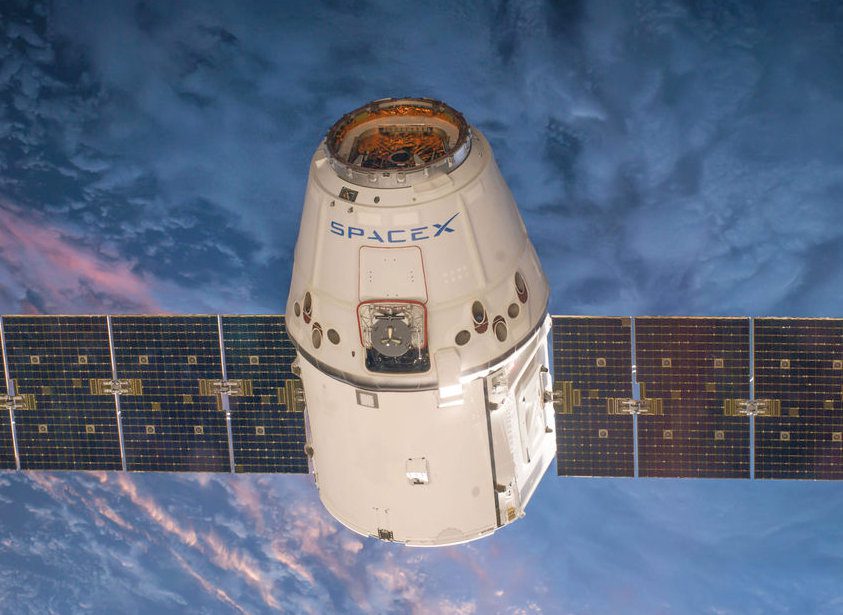SpaceX’s unmanned Dragon spacecraft was nearing the International Space Station on Tuesday with a cargo of supplies, including freeze-dried meals, 20 live lab mice and a 3D printer.
Astronauts at the orbiting lab are scheduled to reach out with the space station’s robotic arm to grasp the Dragon at 07:04 (11:04 GMT), Nasa said. Germany’s Alexander Gerst, an astronaut from the European Space Agency, will operate the 17.6m robotic arm to capture the Dragon and bring it closer. He will be assisted by Nasa astronaut Reid Wiseman.
Germany’s Alexander Gerst, an astronaut from the European Space Agency, will operate the 17.6m robotic arm to capture the Dragon and bring it closer. He will be assisted by Nasa astronaut Reid Wiseman.
The berthing operation will be complete when the vessel latches fully onto the research outpost about two hours later.
The Dragon capsule is carrying more than 2 200kg of supplies and material for science experiments, including a tool to measure wind speed at the ocean’s surface.
The spacecraft launched early Sunday from Cape Canaveral, Florida, and is SpaceX’s fourth contracted mission with Nasa for supply trips to the ISS and back.
Contracts
The lab mice are the first live mammals to hitch a ride aboard a commercial cargo ship, and they are enclosed in a research cage for studying the effects of weightlessness on their bodies.
The 3D printer is the first of its kind to demonstrate how the technology can be used in space, even without gravity to assist the process.
Nasa television coverage of the spaceship’s arrival is scheduled to begin at 09:30 GMT.
In 2010, SpaceX became the first private company to send a spacecraft to the ISS.
The company is run by internet mogul Elon Musk, who accumulated his fortune by co-founding PayPal and also runs Tesla Motors.
Orbital Sciences has also contracted with Nasa to send its Cygnus cargo ship to the space station, but unlike the Dragon, which can return to Earth intact, the Cygnus burns up on re-entry to Earth’s atmosphere.
Last week, SpaceX was awarded a $2bn contract from Nasa to continue developing its Dragon V2 vehicle with the goal of sending people to the space station as early as 2017.
Boeing won a larger Nasa contract, for more than $4bn, for the development of its CST-100 crew vehicle.
Nasa lost its ability to reach the space station when the shuttle program ended in 2011 after 30 years.
In the meantime, the world’s astronauts must rely on Russia’s Soyuz spacecraft to get to the ISS and back, at a cost of $70m per seat.




